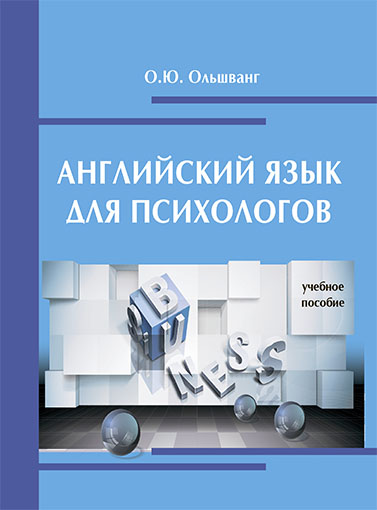
Научная электронная библиотека
Монографии, изданные в издательстве Российской Академии Естествознания
Gestalt
The German word Gestalt literally means “configuration” or “figure” and is used to refer to any general pattern which manifests characteristics different than are inherent in its parts. For example, a musical piece has a Gestalt because the tune and melodies are characteristics which it has, but which none of the individual notes have. Similarly, a sentence has a Gestalt because it has a characteristic of its meaning which none of the individual words or letters have. These characteristics of the whole are called emergent properties or supervenient properties.
The concept of Gestalt is used in a theory when it attempts to treat its subjects as unified wholes because any attempt to simply deal with the parts will mean that vital properties of the whole will go unattended. For example, Gestalt psychology attempts to study human behavior as a whole phenomenon because individual aspects of the mind or consciousness would not be the same thing. The movement which leads to the creation of Gestalt Theory grew out of dissatisfaction with the more traditional atomistic methodology in science.
Beginning in the 1920s (although there were precedents which can be found even earlier), some philosophers and psychologists questioned the common methodological presuppositions which dictated that the study of any phenomenon had to proceed by breaking it down into constituent parts. Anything which could not be broken down could not be studied scientifically – as a result, important aspects of human experience were left to more mystical and religious explanations.
Both atomistic and Gestalt methodology are not, however, really at odds with one another. Both have the goal of describing and explaining the nature and of observed events – but whereas the former begins with the parts, the latter begins with the whole. In the middle, the two can meet. The latter, however, does not assume that these connections are neutral and that a description of the parts will necessarily lead to a description of the whole. In other words, it assumes that the whole is more than the sum of the parts.
Gestalt psychology was founded by German thinkers Max Wertheimer, Wolfgang Kohler and Kurt Koffka and focused on how people interpret the world. The Gestalt perspective formed partially as a response to the structuralism of Wilhelm Wundt, who focused on breaking down mental events and experiences to the smallest elements. Max Wertheimer noted that rapid sequences of perceptual events, such as rows of flashing lights, create the illusion of motion even when there is none. This is known as the phi phenomenon. Motion pictures are based upon this principle, with a series of still images appearing in rapid succession to form a seamless visual experience.
According to Gestalt psychology, the whole is different than the sum of its parts. Based upon this belief, Gestalt psychologists developed a set of principles to explain perceptual organization, or how smaller objects are grouped to form larger ones. These principles are often referred to as the “laws of perceptual organization”.
However, it is important to note that while Gestalt psychologists call these phenomena “laws”, a more accurate term would be “principles of perceptual organization”. These principles are much like heuristics, which are mental shortcuts for solving problems.
1. Say which of these statements are true or false
|
true |
false |
|
|
The theory of Gestalt attempts to simply deal with the parts |
||
|
According to Gestalt psychology, the whole is different than the sum of its parts. |
||
|
Gestalt psychology was founded by German thinkers Max Wertheimer, Wolfgang Kohler and Kurt Koffka |
||
|
Both atomistic and Gestalt methodology are really at odds with one another. |
||
|
The movement which leads to the creation of Gestalt Theory grew out of satisfaction with the traditional atomistic methodology in science. |
||
|
Gestalt psychology attempts to study human behavior as a whole phenomenon. |
2. Match the terms and the definitions
|
Gestalt |
a means of saving time or effort |
|
Phi phenomenon |
a false appearance or deceptive impression of reality |
|
Mental shortcuts |
the process by which an organism detects and interprets information from the external world by means of the sensory receptors |
|
The whole |
an arrangement of two or more things in a successive order |
|
Perception |
the illusion that when two lights are rapidly turned on and off in succession something appears to move backwards and forwards between them while the lights stay stationary |
|
Heuristics |
an assemblage of parts viewed together as a unit |
|
Illusion |
a perceptual pattern or structure possessing qualities as a whole that cannot be described merely as a sum of its parts |
|
Interpret |
a method or set of rules for solving problems other than by algorithm |
|
Sequence |
to clarify or explain the meaning of; elucidate |
3. Fill in the gaps with prepositions
1. Gestalt psychology was founded _______ German thinkers Max Wertheimer, Wolfgang Kohler and Kurt Koffka.
2. Gestalt focused ______ how people interpret the world.
3. The German word Gestalt is used to refer to any general pattern which manifests characteristics different than are inherent _____ its parts.
4. The movement which leads ____ the creation of Gestalt Theory grew out ____ dissatisfaction with the more traditional atomistic methodology in science.
5. The common methodological presuppositions dictated that the study of any phenomenon had to proceed by breaking it down _____ constituent parts.
6. Gestalt psychologists developed a set ____ principles to explain perceptual organization, or how smaller objects are grouped _____ form larger ones
7. The “principles of perceptual organization” are much like heuristics, which are mental shortcuts _____ solving problems.
8. Motion pictures are based ________ the principle of phi-phenomenon, with a series of still images appearing _________ rapid succession to form a seamless visual experience.
